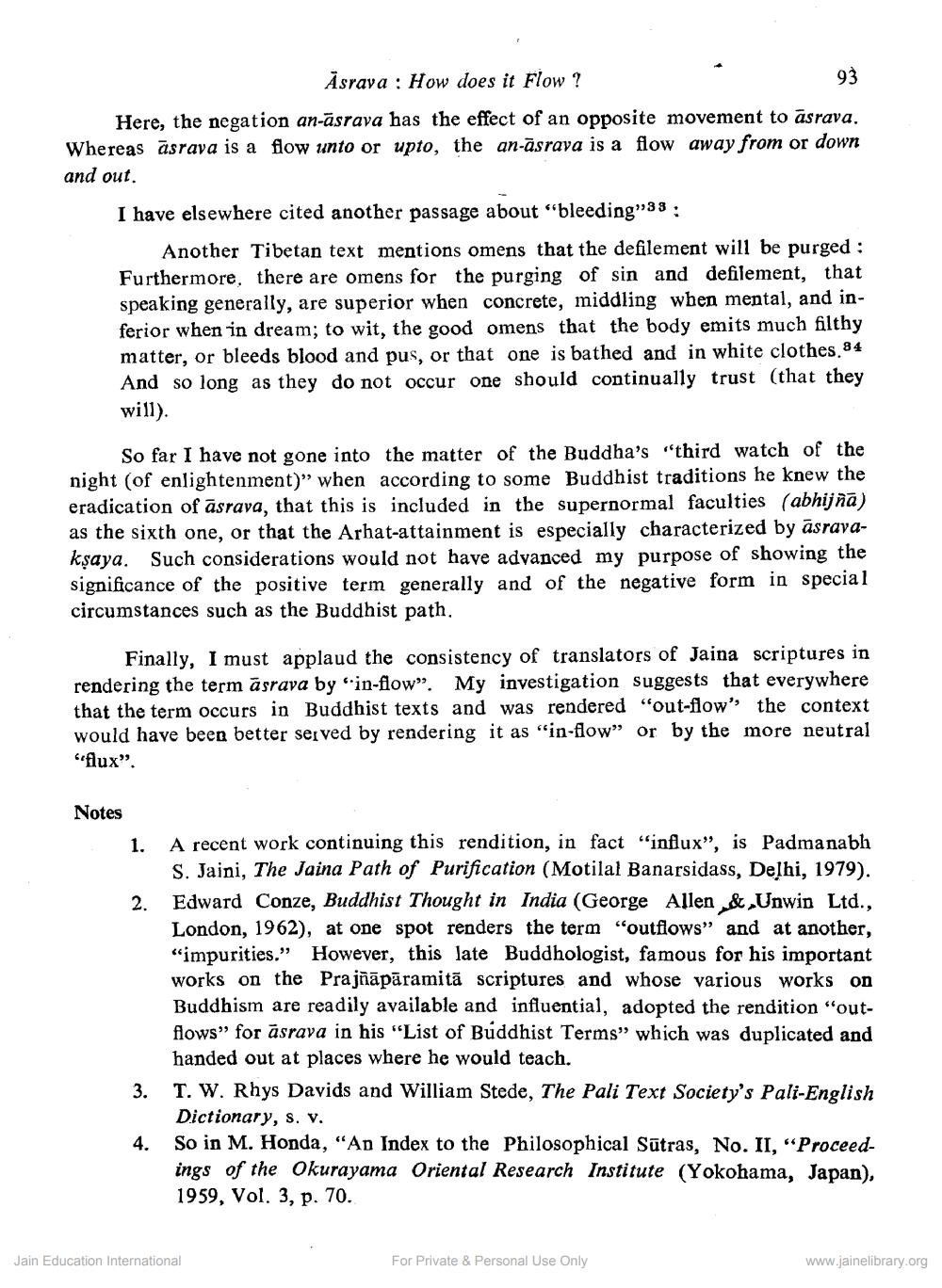Book Title: Asarva how does it flow Author(s): Alex Wayman Publisher: Z_Aspect_of_Jainology_Part_3_Pundit_Dalsukh_Malvaniya_012017.pdf View full book textPage 6
________________ - 93 Asrava : How does it Flow ? 93 Here, the negation an-āsrava has the effect of an opposite movement to asrava. Whereas asrava is a flow unto or upto, the an-asrava is a flow away from or down and out. I have elsewhere cited another passage about "bleeding"33 : Another Tibetan text mentions omens that the defilement will be purged : Furthermore, there are omens for the purging of sin and defilement, that speaking generally, are superior when concrete, middling when mental, and inferior when in dream; to wit, the good omens that the body emits much filthy matter, or bleeds blood and pus, or that one is bathed and in white clothes.84 And so long as they do not occur one should continually trust (that they will). So far I have not gone into the matter of the Buddha's "third watch of the night (of enlightenment)” when according to some Buddhist traditions he knew the eradication of asrava, that this is included in the supernormal faculties (abhijñā) as the sixth one, or that the Arhat-attainment is especially characterized by āsravakşaya. Such considerations would not have advanced my purpose of showing the significance of the positive term generally and of the negative form in special circumstances such as the Buddhist path. Finally, I must applaud the consistency of translators of Jaina scriptures in rendering the term asrava by “in-flow”. My investigation suggests that everywhere that the term occurs in Buddhist texts and was rendered "out-flow' the context would have been better served by rendering it as "in-flow” or by the more neutral flux". Notes 1. A recent work continuing this rendition, in fact "influx", is Padmanabh S. Jaini, The Jaina Path of Purification (Motilal Banarsidass, Delhi, 1979). Edward Conze, Buddhist Thought in India (George Allen & Unwin Ltd., London, 1962), at one spot renders the term “outflows” and at another, “impurities.” However, this late Buddhologist, famous for his important works on the Prajñāpāramitā scriptures and whose various works on Buddhism are readily available and influential, adopted the rendition "outflows” for asrava in his "List of Buddhist Terms” which was duplicated and handed out at places where he would teach. T. W. Rhys Davids and William Stede, The Pali Text Society's Pali-English Dictionary, s. v. So in M. Honda, "An Index to the Philosophical Sūtras, No. II, “Proceedings of the Okurayama Oriental Research Institute (Yokohama, Japan), 1959, Vol. 3, p. 70. 3. 4. Jain Education International For Private & Personal Use Only www.jainelibrary.orgPage Navigation
1 ... 4 5 6 7 8
